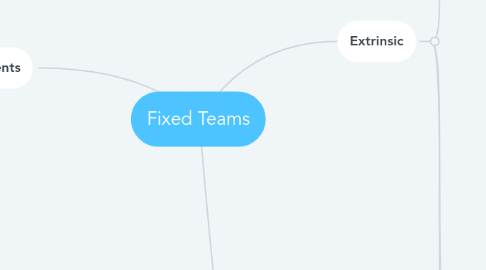
1. Possible Improvements
1.1. Team rotation
1.2. Shorten shift hours
1.3. Ensure balanced composition
1.4. Hybrid model (fixed on several days, non fixed on others)
2. Extrinsic
2.1. Interactions
2.1.1. Senior
2.1.1.1. Cons
2.1.1.1.1. Bad first impression may stick
2.1.1.1.2. Feedback is repetitive ("saturation point")
2.1.1.1.3. Familiarity makes seniors more "tolerant"
2.1.1.2. Pros
2.1.1.2.1. Senior-to-MO
2.1.1.2.2. MO-to-senior
2.1.2. Junior
2.1.2.1. Pros
2.1.2.1.1. Better teamwork
2.1.2.1.2. MO-to-MO peer learning
2.1.2.2. Cons
2.1.2.2.1. Artificial environment (not realistic to expect to work within the same team structure)
2.1.2.2.2. Teamwork was good so less need to learn how to develop team work
2.1.2.2.3. Less chances to interact with fellow residents
2.2. Balanced composition
2.2.1. Juniors
2.2.1.1. MOs/R1-3s
2.2.1.1.1. Peer-learning (R3s teaching R1s)
2.2.1.1.2. Peer-learning (OTO MOs teaching ED JRs)
2.2.2. Seniors
2.2.2.1. Faculty personality: Distribution of pro-teaching, less intimidating seniors
2.2.2.2. SR/AC/C/SC
2.2.2.3. Distribution of subject matter experts (eg Toxi, US, Trauma specialists)
2.3. Shift system
2.3.1. More time for informal learning
2.3.2. Longer shift, but more rest time to recoup
2.3.3. More varied case mix each shift (eg 12hr shift broken into 2x 6hr shifts; cross-cover)
3. Intrinsic
3.1. Motivation
3.1.1. Increased
3.1.1.1. Social positive influence
3.1.1.2. Follow-up by fixed seniors
3.1.1.3. Team commitment
3.1.2. Decreased
3.1.2.1. Familiarity = less drive to prove oneself
3.1.2.2. Emphasis on COVID affected learning
3.1.2.2.1. Longer work hours = more tired
3.1.2.2.2. Pessimism
3.1.2.2.3. Examinations cancelled
3.1.2.3. Service demands competing with learning
